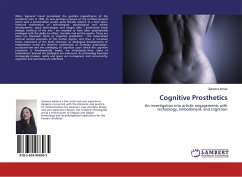When Sigmund Freud proclaimed the god-like magnificence of the prosthetic man in 1930, he was perhaps unaware of the confines beyond which such a proclamation would, quite literally, extend. In a brief socio-historical examination of technological, psychological and artistic developments, visual technologies and images alike - particularly those dialogic artefacts of the arts - are revealed to have been systematically privileged with the ability to reflect, translate and aid the psyche. These are what Lev Manovich terms as 'cognitive prosthetics' - the externalised internal mental processes of the human psyche, and thus, in Cartesian terms, extensions of the body. However, as ideological developments of embodiment unveil the inherent problematic of Cartesian polarisation, ocularcentrism and the privileging of cognition upon which the cognitive prosthetic is fundamentally based, are threatened. Here, ideas of embodiment beyond the biological are embraced. As technology becomes increasingly invasive, reality and space are re-imagined, and concurrently, cognition and autonomy are redefined.
Bitte wählen Sie Ihr Anliegen aus.
Rechnungen
Retourenschein anfordern
Bestellstatus
Storno








